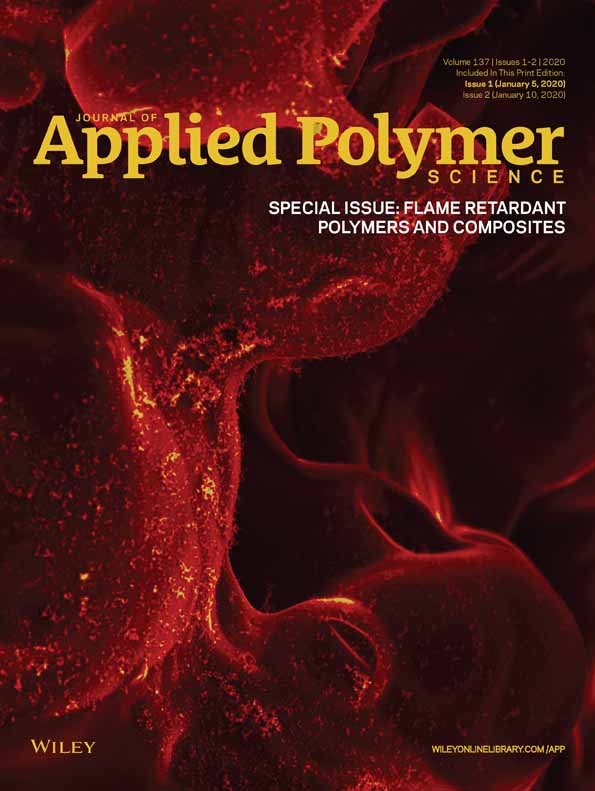Intumescent fire-retardant coatings for plastics based on poly(vinylphosphonic acid): Improving water resistance with comonomers
ABSTRACT
Coatings based on the in situ photopolymerization of vinyl phosphonic acid (VPA) with triallyl cyanurate as a crosslinking agent are shown to be effective not only for fire-protecting glass fiber-reinforced epoxy resin (GRE) composites but also poly(methyl methacrylate) (PMMA), a typical meltable and flammable thermoplastic. Dry adhesion of polyVPA coatings to PMMA surfaces is excellent but, as with coatings on GRE, adhesion following water-soak tests is poor. Copolymerizing VPA with more hydrophobic monomers improves wet adhesion, albeit with some impairment of fire performance, with copolymers of VPA and acrylonitrile giving the best results. © 2019 Wiley Periodicals, Inc. J. Appl. Polym. Sci. 2020, 137, 47601.




